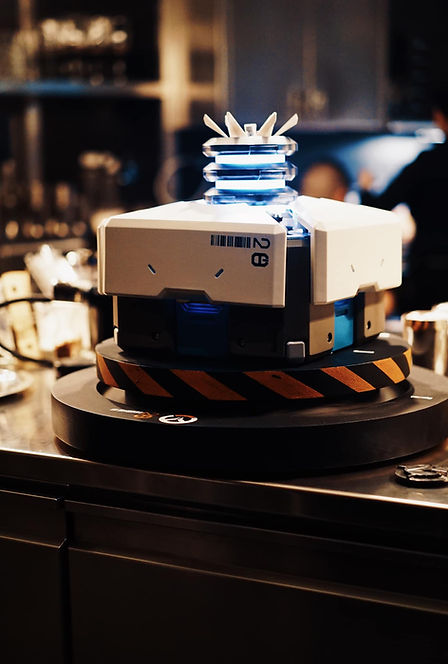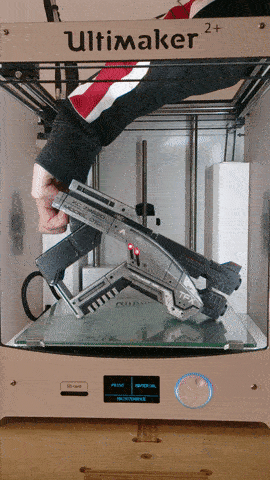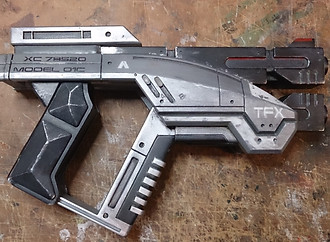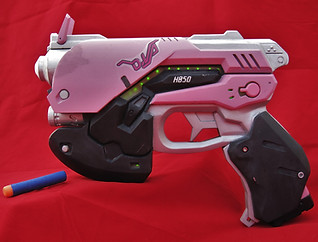
Overwatch loot box
.jpg)
DESIGN BRIEF:
Create a working replica of the Loot Box from Overwatch by Blizzard Entertainment that doubles as and engagement ring box. Recreate the lighting and motion as closely as possible without compromising the original aesthetic.
BREAKING DOWN THE ANIMATION:
Using reference images and animations I broke down each component part, it's motion and lighting effect.



1.
Illumination effects around the rim and out the top.
2.
Illumination dims
Small lock nubs move out.
Orange handles move down.
white panels pop out and down.
3.
Central towers move down.
Illumination brightens.
CONCEPT TO ASSEMBLY DESIGN:
I sketched out basic mechanism ideas to test sizing and motion before moving forward to a basic CAD model. Once a mechanism design was chosen I made a more detailed model with assembly factored in. Each mechanism considered had pros and cons.
Pneumatic piston
Pro: Large force, very fast
Con: expensive, limited stroke
Servo driven piston
Pro: fast, simple, cheap
Con: large swept area
Lead Screw
Pro: Large force, long reach
Con: more complex
Rack and pinion
Pro: Simpler, long reach
Con: Low force, without gear box





ELECTRONIC DESIGN:
To remove the need for external controls and preserve the original aesthetic a Bluetooth controller was chosen. Based on the mechanisms and their motor/servo requirements the electronic components were listed out, connections mapped and a program flow chart drawn up.


PROTOTYPING AND ASSEMBLY:
Each component was tested individually and in conjunction with others to find any faults. Throughout the prototyping phase detailed notes were kept on problems and possible improvements, then new parts were made using these notes. This process was iterated 2-3 times until all issues were resolved.







REFLECTION
The decision to 3D print all the components greatly increased the speed of manufacture, reduced cost and allowed complex geometries to be made that could fit into tight spaces. However the precision of current desktop 3D printers was not sufficient to produce quality parts for mechanisms that needed tight tolerances. Particularly the linear actuator for the white panels was out of allignment enough to produce vibration. Future projects could include more precise CNC milled parts for critical components to ensure smooth running of the mechanisms.
Mass effect predator pistol

BRIEF
Create a replica of the folding pistol from the mass effect video games. Match the aesthetic, proportions and motion of the original as closely as possible.
REFERENCE IMAGE ANALYSIS
The original art from the game clearly has parts passing through each other which would be impossible to replicate. A compromise was made to keep the shape and motion similar to the reference while still being technically possible.

COMPONENT BREAKDOWN AND MOTION SIMULATION
From the reference images the pistol was broken down into distinct components and the necessary motion mapped out.


CAD DESIGN
Mechanism designs were tested in CAD and iterated on to improve motion and fit.


ASSEMBLY
For fast prototyping 3D printing was chosen which also helped reduce the need for assembly of complex shapes.


REFLECTION
Despite limited space and a complex mechanism the folding functioned perfectly. However because of these factors the assembly process was difficult. A compromise between following the reference and scaling the size up for easier assembly must be made in future.

overwatch nerf gun

BRIEF
Create a replica of the pistol from the D.Va Character from the video game Overwatch that functions as a Nerf Gun. Preserve the aesthetic and motion of the original. Design parts for a small (10-20) production run.
REFERENCE
Detailed reference images made it easier to create a CAD model and see where fasteners could be disguised.

CAD DESIGN
During the concept design phase the moving components were separated out. Then a more detailed design of the mechanism and assembly were built around them. A mechanical spring loaded design was chosen for the recoil mechanism rather than a motor driven one to reduce electrical complexity and costs.




PROTOTYPING
3D Printing was used to quickly produce prototypes and iterate upon designs. Several design flaws were discovered with the nerf Dart propulsion method and the moving barrel which were quickly fixed thanks to the modular design of components and the speed of 3D printing.






REFLECTION
The aesthetic was preserved perfectly and the darts fired smoothly in a semi automatic fashion. The mechanism and removable battery all functioned as intended however the last few darts had a tendency to jam within the magazine. Although it did not jam all the time it was not as reliable as I was comfortable with to start a production run. The shelled out halves of the main body could easily have been molded and cast so if the jamming issue were fixed the nerf gun could be relatively easy to manufacture.


